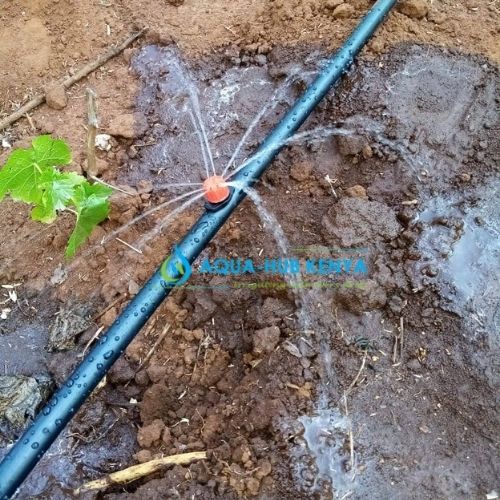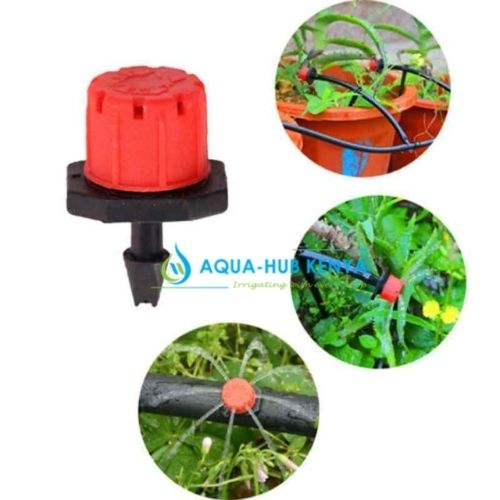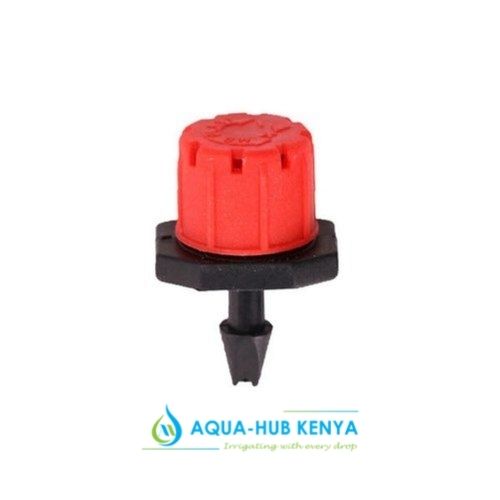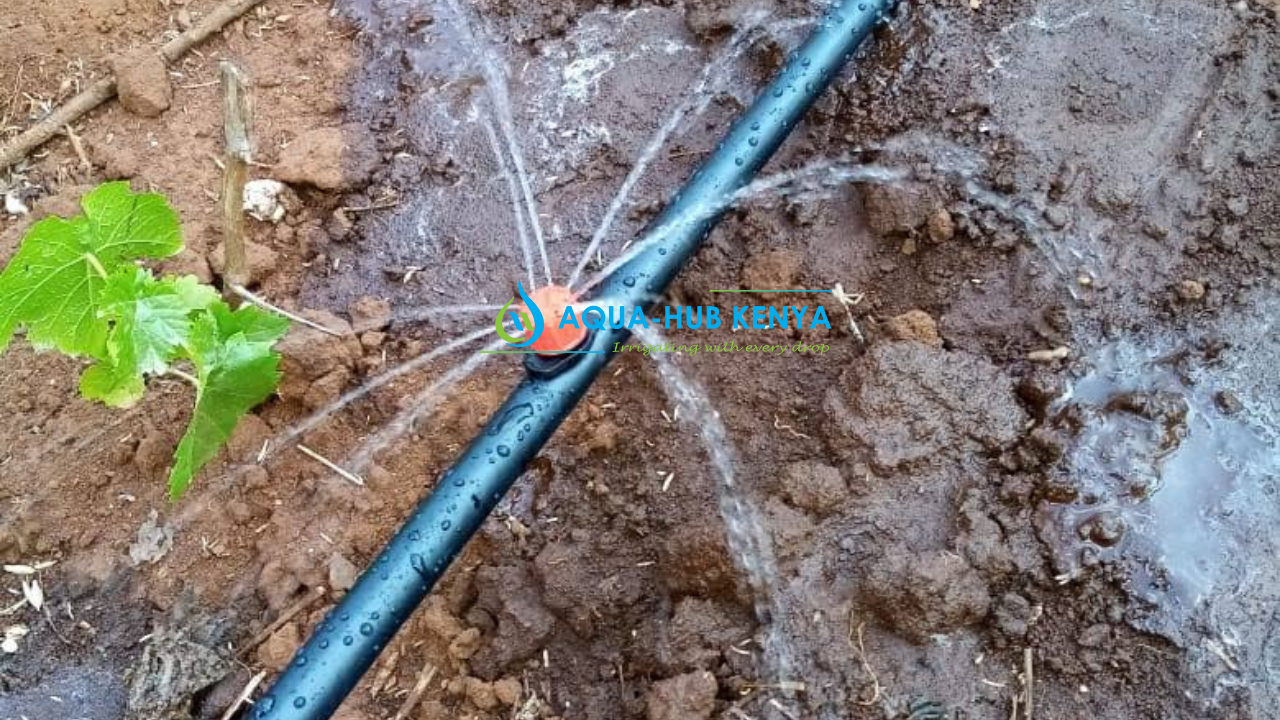Button Dripper irrigation provides a consistent and smooth water flow to your plants. Designed to ensure that big variations in pressure only produce a slow shift in the flow to the plants. Hence, button drop emitters are used. Button Drip Emitters function as miniature throttles. Ensuring a consistent flow rate. The volume of water emitted is reduced and regulated by the emitter.

Description of Button Dripper Irrigation
Irrigation drippers or irrigation emitters are the devices in the button dripper irrigation system. They convert the pressure water flow in the capillary into a drip or fine flow through the flow channel or orifice. The most typical dripper flow rate is 1 to 4 liters/hour, with a maximum of 12 liters/hour. The dependability of the drip irrigation system and the quality of the irrigation water are directly affected by the quality of the drip system emitters. As a result, drip irrigation drippers are sometimes referred to as the “heart” of the water dripper’s irrigation system. Again, water drippers can be classified in a variety of ways.
What are the categories of button drippers?
Adjustable button drippers: These drippers provide the farmer with total control over the amount of water they emit. From zero to seventy liters per hour (total shut off) (completely open). According to the manufacturer, they have red color codes and come in various sizes. The discharge specifications remain the same. The benefit of this design is that the farmer has control over how much water each plant receives. Make adjustments for a tree that need more to obtain the same amount of water and vice versa. The disadvantage is that one may unintentionally under or over irrigate.
Non-adjustable types: They irrigate at the manufacturer’s predetermined water discharge rate. For ease of identification, each discharge type is color-coded. They supply a consistent amount of water to each tree crop. On the negative side, it is unable to tailor to specific crop water demands.

What are the different types of Drip Irrigation Drippers?
The first classification of the button irrigation drippers is based on the connection method of drippers and capillaries. The categories include tube-type drippers, inter-tube drippers, and in-line drippers. Another classification is based on the flow state of the dripper. The division include a laminar flow dripper and a turbulent dripper. The last classification is based on the energy dissipation method of drip irrigation system emitters. Examples of the button drippers include;
- PC online dripper
- PC online non-drain dripper
- Take apart PC dripper
- Turbulent flowing online dripper
- Adjustable dripper
What are the specifications of button drippers?
- Working pressure is limited to 2.0 bar.
- Filtration: 130 micron / 120 meshes.
- Turbulent flow via a one-of-a-kind labyrinth-water-passage design decreases the possibility of blockage.
- Consistent flow rate.
- The raised barbed exit stops water from running down the drip lateral.
- Chemical and fertilizer resistance in landscaping applications.
- UV-resistant, and long-lasting plastic.
Button Dripper irrigation is suitable for which kind of crops?
Common uses of drippers are on fruit farming in Kenya. The most common users being farmers of passion fruit, banana plantations, avocado, macadamia, tangerine, orange, tree tomato, apples, and mango. Khat farm is the largest non-fruit usage.
What is the consideration when installing Button Dripper irrigation?

When it comes to drip irrigation drippers, you have a lot of options (sometimes called emitters). You must consider numerous things before selecting the ideal one for your project. Pressure compensating (pc) vs. non-pressure compensating (NPC) water, filthy or hard water, elevation differences, and different water requirements amongst plants are some of these issues. We’ll go through each of these criteria, as well as a few additional concerns, in greater depth in this tutorial.
How to install the drip emitters
Punch a hole in the drip tube to install the emitters. Then you insert the barbed emitter inlet into the hole, which the barb secures. The poly drip tube expands around the barb and then closes around the barb’s stem because it is elastic. The trick is to make sure the hole you punch in the tubing is less than the barb stem’s diameter. The hole will not seal if it is bigger than the barb stem, resulting in a leak.
If the emitter manufacturer produces a particular punch, I recommend using it since it will create the correct size hole in the tubing. If a proper hole punch is not available, an ice pick or even a nail will usually suffice. Just make sure the punch’s diameter isn’t larger than the stem on the emitter barb. Make sure you just punch the hole through one side of the tube; it’s easy to go all the way through one side and out the other.
Where to get button drip emitters
Contact Aqua Hub Kenya Limited’s Nairobi and Eldoret branches for button dripper irrigation. We are a trusted partner to all your farm inputs and management practices. For more information, call: 0790719020

